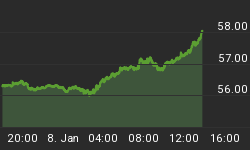Getting your drinking water from the toilet may not sound that appetizing, but 1-in-5 Californians are already doing it. So are folks in Singapore, and dozens more cities in the US and around the world are looking at doing the same thing. The reason is simple: clean water is getting more expensive and difficult to obtain, and utilities are looking for cheaper ways to deliver it.
It's one of the biggest growth areas in the water-treatment industry, and they're calling it "potable reuse" or more descriptively "toilet-to-tap" technology. The engineers have figured out how to take wastewater and filter it, disinfect it and restore it to a drinkable (or "potable") state which can then be piped directly back into the water distribution system and to your tap.
Neither the concept nor the technology is that new, but what is new is the "potable" part. In the past they simply filtered the wastewater to the point where it was fit for non-potable purposes such as agricultural irrigation, industrial uses and street cleaning. But now they're taking the filtration process a few steps further, to the point where the water is safe to drink, and billions of dollars are being funneled to the companies who are designing, manufacturing and installing the equipment to make it all happen.
In Singapore they're already getting about 30 percent of their drinking water directly from wastewater. I can tell you that the tap-water in Singapore didn't taste that great when I was last there, but nonetheless it's preferable to importing "fresh" water all the way from Malaysia. Singapore is a tiny place with very little fresh water of its own, so it pipes about a third of its daily water needs from Malaysia --- which is expensive and unwise from a security perspective. As a result, Singapore has become a hub for water innovation, focusing on reuse, desalination, and rainwater catchment. They've got almost 40 years before their deal with Malaysia runs out, and by that time they say they can be water independent.
The technology to treat wastewater isn't complicated. Microfiltration followed by reverse osmosis and UV treatment. It's expensive, but so is sourcing new fresh water supplies. Is it gross to drink water from the sewer? Yes but people have little choice, at least in urban areas. The researchers insist the water is clean, and free of pathogens, contaminants, salts, dissolved particles and of course pharmaceuticals. Let's hope they're right.
At the end of the day, municipalities are going to be increasingly choosing potable reuse because it's supposed to be cheaper and more flexible than a desalination plant --- although desal treatment is growing too and probably won't be displaced by potable reuse. They're both in great demand.
That's why I've been telling readers about water-investments, or "blue gold" as some call it, and have identified several companies which are either pure water plays or close to it. The fact is there are relatively few pure-play water stocks out there, and most of them are fully valued. That being said, one of the companies I've told you about is Hyflux (you can buy it in Singapore on the SGX or here in the US, market cap in USD is slightly more than $700mm and the share price is $0.90). Why am I telling you about it?

First, they're in a sector which should see strong growth for decades to come --- they build and run water-treatment plants, and also have their own filtration technologies.
Second, their market is not just limited to Singapore (although even if it was, that would be fine as the Singapore water market is growing well), they've got projects throughout Southeast Asia, China, India, Africa, and the Middle East. By far, their biggest market is China. Yet they have the credibility of being a Singapore public company with a solid history and subject to the Singapore exchange.
Third, unlike many of the larger water stocks here in the US, Hyflux shares have actually dropped in the past year and the bottom line is very few US retail investors follow the company. The stock is relatively under-valued.
Fourth, an investment bank downgraded the shares back in 2012 because Hyflux's margins were, in the analyst's opinion, too low. Plus, macro-factors in Asia led to generally weak share prices for companies with exposure there. Hyflux's share price got hit and hasn't recovered.
Fifth, the company's chief executive owns about a third of the company. That's a good sign.
Sixth, Hyflux issues a dividend. Who doesn't want a dividend.
The upside on Hyfux shares in the next three years is easily a triple. The risk is mitigated by the company's strong fundamentals. It's one to own. And if you think Jim Rogers is a bright investor (and I do) then you'll like knowing he owns shares in Hyflux too.
















